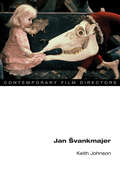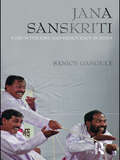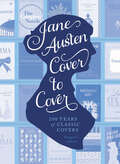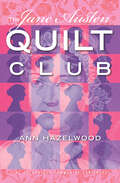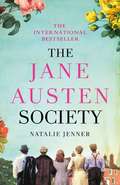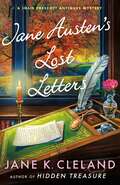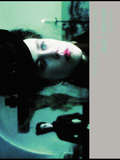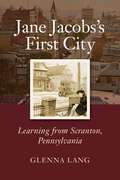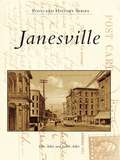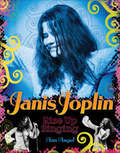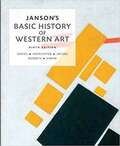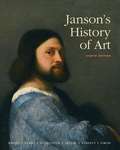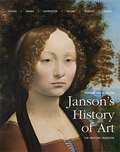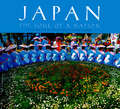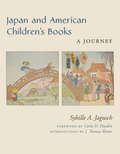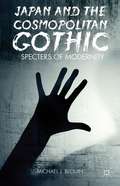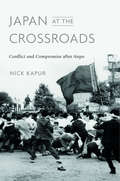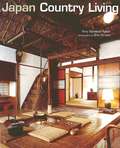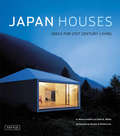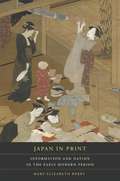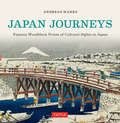- Table View
- List View
Jan Svankmajer (Contemporary Film Directors)
by Keith Leslie JohnsonJan Svankmajer enjoys a curious sort of anti-reputation: he is famous for being obscure. Unapologetically surrealist, Svankmajer draws on the traditions and techniques of stop-motion animation, collage, montage, puppetry, and clay to craft bizarre filmscapes. If these creative choices are off-putting to some, they have nonetheless won the Czech filmmaker recognition as a visionary animator. Keith Leslie Johnson explores Svankmajer's work as a cinema that spawns new and weird life forms ”hybrids of machine, animal, and non-organic materials like stone and dust. Johnson's ambitious approach unlocks access to the director's world, a place governed by a single, uncanny order of being where all things are at once animated and inert. For Svankmajer, everything is at stake in every aspect of life, whether that life takes the form of an object, creature, or human. Sexuality, social bonds, religious longings ”all get recapitulated on the stage of inanimate things. In Johnson's view, Svankmajer stands as the proponent of a biopolitical, ethical, and ecological outlook that implores us to reprogram our relationship with the vital matter all around us, including ourselves and our bodies.
Jana Sanskriti: Forum Theatre and Democracy in India
by Sanjoy GangulyJana Sanskriti Centre for the Theatre of the Oppressed, based in West Bengal, is probably the largest and longest lasting Forum Theatre operation in the world. It was considered by Augusto Boal to be the chief exponent of his methodology outside of its native Brazil. This book is a unique first-hand account - by the group's artistic director Sanjoy Ganguly - of Jana Sanskriti's growth and development since its founding in 1985, which has resulted in a national Forum Theatre network throughout India. Ganguly describes the plays, people and places that have formed this unique operation and discusses its contribution to the wider themes espoused by Forum Theatre. Ganguly charts and reflects on the practice of theatre as politics, developing an intriguing and persuasive case for Forum Theatre and its role in provoking responsible action. His combination of anecdotal insight and lucid discussion of Boal’s practice offers a vision of far-reaching transformation in politics and civil society.
Jana Sanskriti (Routledge Performance Practitioners #24)
by Ralph YarrowRegarded by Augusto Boal as the international icon of his vision, Jana Sanskriti are the leading practitioners of Theatre of the Oppressed and Forum Theatre in India and the East. The group has worked continuously with rural communities in West Bengal since its beginnings in 1985 to reconfigure social and political relationships through theatre, achieving both a solid regional presence and an international reputation. This book combines: a biography of the group, charting their history, methodology and modes of operation an examination of Jana Sanskriti through the writings of their founder, Sanjoy Ganguly a detailed analysis of their performance events and practices, including the plays collected in Ganguly's Where We Stand (2009) practical exercises and games, taken from Jana Sanskriti's workshops and festivals. As a first step towards critical understanding, and as an initial exploration before going on to further, primary research, Routledge Performance Practitioners offer unbeatable value for today’s student.
Jane Austen Cover to Cover: 200 Years of Classic Book Covers
by Margaret C. SullivanJane Austen's six novels are true classics, still immensely popular some 200 years after their first publication. But although the celebrated stories never change, the covers are always different. Jane Austen Cover to Cover compiles two centuries of design, from elegant Victorian hardcovers and the famed 1894 "Peacock" edition to 1950s pulp, movie tie-in editions, graphic novels, foreign-language translations, and many, many others. Filled with beautiful artwork and insightful commentary, this fascinating and visually intriguing collection is a must for Janeites, design geeks, and book lovers of every stripe.
The Jane Austen Quilt Club (Colebridge Community Series)
by Ann HazelwoodEveryone has at least one secret they carry through their lives. Lily tries to keep a secret herself as she encounters the many secrets of her quilt class, community, friends, and family members. The mystery continues with the doctor that once lived in Lily's house, whose secrets may never be known. An unexpected, life-changing secret is revealed when an estranged cousin comes to visit. Will Lily tell? Quilted Secrets is the third novel in the Wine Country Quilts Series. Ann Hazelwood is a former shop owner and native of St. Charles, Missouri. She's always adored quilting and is a certified quilt appraiser. She's the author of the wildly successful Colebridge Community Series and considers writing to be one of her greatest passions. Other Book Series: Colebridge Community Series (7 novels) and East Perry County Series (5 novels).
The Jane Austen Society: The internationally bestselling debut that has won readers' hearts in 2021
by Natalie JennerTHE INTERNATIONAL BESTSELLER'A wonderful book, a wonderful read' Karen Joy Fowler, bestselling author of The Jane Austen Book ClubOnly a few months after the end of the Second World War, a new battle is beginning in the little village of Chawton. Once the final home of Jane Austen, the Chawton estate is dwindling, and the last piece of Austen's heritage is at risk of being sold to the highest bidder... Drawn together by their love of her novels, eight very different people - from a local farmer to a glamorous film star - must unite to attempt something remarkable. As new friendships form, and the griefs of the past begin to fade, they rally together to create the Jane Austen Society, and to save the beloved novelist's home and legacy. But can her words change all their lives in return?A heartbreaking and uplifting novel of hope, loss and love. Perfect for fans of Miss Austen by Gill Hornby and The Guernsey Literary and Potato Peel Pie Society by Annie Barrows and Mary Ann Shaffer'A charming and memorable debut, which reminds us of the power of books to unite and heal'Pam Jenoff, New York Times bestselling author of The Lost Girls of Paris
Jane Austen's Lost Letters: A Josie Prescott Antiques Mystery (Josie Prescott Antiques Mysteries #14)
by Jane K. ClelandJane K. Cleland returns with Jane Austen's Lost Letters, the fourteenth installment in the beloved Josie Prescott Antiques series, set on the rugged New Hampshire coast.Antiques appraiser Josie Prescott is in the midst of filming a segment for her new television show, Josie’s Antiques, when the assistant director interrupts to let her know she has a visitor. Josie reluctantly pauses production and goes outside, where she finds an elegant older woman waiting to see her.Veronica Sutton introduces herself as an old friend of Josie’s father, who had died twenty years earlier. Veronica seems fidgety, and after only a few minutes, hands Josie a brown paper-wrapped package, about the size of a shoebox, and leaves.Mystified, Josie opens the package, and gasps when she sees what’s inside: a notecard bearing her name—in her father’s handwriting—and a green leather box. Inside the box are two letters in transparent plastic sleeves. The first bears the salutation, “My dear Cassandra,” the latter, “Dearest Fanny.” Both are signed “Jane Austen.” Could her father have really accidentally found two previously unknown letters by one of the world’s most beloved authors—Jane Austen? Reeling, Josie tries to track down Veronica, but the woman has vanished without a trace.Josie sets off on the quest of a lifetime to learn what Veronica knows about her father and to discover whether the Jane Austen letters are real. As she draws close to the truth, she finds herself in danger, and learns that some people will do anything to keep a secret—even kill.
Jane Campion (Routledge Film Guidebooks)
by Deb VerhoevenJane Campion is one of the most celebrated auteurs of modern cinema and was the first female director to be awarded the prestigious Palme d'Or. Throughout her relatively short career, Campion has received extraordinary attention from the media and scholars alike and has provoked fierce debates on issues such as feminism, colonialism, and nationalism. In this detailed account of Jane Campion's career as a filmmaker, Deb Verhoeven examines specifically how contemporary film directors 'fashion' themselves as auteurs – through their personal interactions with the media, in their choice of projects, in their emphasis on particular filmmaking techniques and finally in the promotion of their films. Through analysis of key approaches to Campion's films, such as The Piano; In the Cut; Sweetie; An Angel at My Table; and Holy Smoke Deb Verhoeven introduces students to the passionate debates surrounding this controversial and often experimental director Featuring a career overview, a filmography, scene by scene analysis and an extended interview with Campion on her approach to creativity, this is a great introduction to one of the most important directors of contemporary cinema.
Jane Jacobs's First City: Learning from Scranton, Pennsylvania
by Glenna LangA thorough investigation of how Jane Jacobs’s ideas about the life and economy of great cities grew from her home city, ScrantonJane Jacobs’s First City vividly reveals how this influential thinker and writer’s classic works germinated in the once vibrant, mid-size city of Scranton, Pennsylvania, where Jane spent her initial eighteen years. In the 1920s and 1930s, Scranton was a place of enormous diversity and opportunity. Small businesses of all kinds abounded and flourished, quality public education was available to and supported by all, and even recent immigrants could save enough to buy a house. Opposing political parties joined forces to tackle problems, and citizens worked together for the public good.Through interviews with contemporary Scrantonians and research of historic newspapers, city directories, and vital records, author Glenna Lang has uncovered Scranton as young Jane experienced it and shows us the lasting impact of her growing up in this thriving and accessible environment. Readers can follow the development of Jane’s acute observational abilities from childhood through her passion in early adulthood to understand and write about what she saw. Reflecting Jane’s belief in trusting one’s own direct observation above all, this volume has been richly illustrated with historic and modern color images that help bring alive a lost Scranton. The book demonstrates why, at the end of Jacobs’s life, her thoughts and conversations increasingly returned to Scranton and the potential for cohesion and inclusiveness in all cities.
Janesville
by Judith Adler Den AdlerIn 1837, Henry Janes applied for a post office called Black Hawk for the southern Wisconsin settlement where he ran a ferry across the Rock River. The postmaster general, however, noticed a town already by that name in the Iowa part of Wisconsin Territory, and he assigned the name Janesville, with Janes as postmaster. Two years later, Janes moved his family west, but the community grew to become the Rock County seat, and by 1860 it was Wisconsin's second-largest city. Today more than 62,000 people call the "City of Parks" home.
Janis Joplin: Rise Up Singing
by Ann AngelForty years after her death, Janis Joplin remains among the most compelling and influential figures in rock-and-roll history. Her story—told here with depth and sensitivity by author Ann Angel—is one of a girl who struggled against rules and limitations, yet worked diligently to improve as a singer. It’s the story of an outrageous rebel who wanted to be loved, and of a wild woman who wrote long, loving letters to her mom. And finally, it’s the story of one of the most iconic female musicians in American history, who died at twenty-seven. Janis Joplin includes more than sixty photographs, and an assortment of anecdotes from Janis’s friends and band mates. This thoroughly researched and well-illustrated biography is a must-have for all young artists, music lovers, and pop-culture enthusiasts.
Janson's Basic History Of Western Art
by David Simon Penelope Davies Frima Hofrichter Joseph Jacobs Ann RobertsJanson’s Basic History of Art provides readers with a beautifully illustrated and masterfully concise introduction to the Western tradition of art history. The text centers discussions around the object, its manufacture, and its visual character. It considers the contribution of the artist as an important part of the analysis. <p><p> This edition creates a narrative of how art has changed over time in the cultures that Europe has claimed as its patrimony and that Americans have claimed through their connection to Europe. Janson’s Basic History of Western Art continues to maintain separate chapters on the Northern European Renaissance, the Italian Renaissance, and the High Renaissance, with stylistic divisions for key periods of the modern era. <p> The 9th edition brings some exciting changes. For the first time, Janson’s Basic History of Western Art comes with MyArtsLab, which provides students with an interactive learning experience. Also, the text incorporates new learning objectives, graphics, and maps throughout. In response to reviewer’s requests, this new edition expands the coverage of Islamic art into its own chapter.
Janson's History of Art: The Western Tradition
by Penelope J. E. Davies Walter B. Denny Frima Fox Hofrichter Joseph Jacobs Ann M. Roberts David L. SimonRewritten and reorganized, this new edition weaves together the most recent scholarship, the most current thinking in art history, and the most innovative online supplements, including digital art library. Experience the new Janson and re-experience the history of art. <p><p> Long established as the classic and seminal introduction to art of the Western world, the Eighth Edition of Janson's History of Art is groundbreaking. When Harry Abrams first published the History of Art in 1962, John F. Kennedy occupied the White House, and Andy Warhol was an emerging artist. Janson offered his readers a strong focus on Western art, an important consideration of technique and style, and a clear point of view. The History of Art, said Janson, was not just a stringing together of historically significant objects, but the writing of a story about their interconnections, a history of styles and of stylistic change. Janson’s text focused on the visual and technical characteristics of the objects he discussed, often in extraordinarily eloquent language. Janson’s History of Art helped to establish the canon of art history for many generations of scholars. <p> The new Eighth Edition, although revised to remain current with new discoveries and scholarship, continues to follow Janson’s lead in important ways: It is limited to the Western tradition, with a chapter on Islamic art and its relationship to Western art. It keeps the focus of the discussion on the object, its manufacture, and its visual character. It considers the contribution of the artist as an important part of the analysis. This edition maintains an organization along the lines established by Janson, with separate chapters on the Northern European Renaissance, the Italian Renaissance, the High Renaissance, and Baroque art, with stylistic divisions for key periods of the modern era. Also embedded in this edition is the narrative of how art has changed over time in the cultures that Europe has claimed as its patrimony.
Janson's History of Art: The Western Tradition
by Penelope J. E. Davies Frima Fox Hofrichter Joseph F. Jacobs Ann S. Roberts David L. Simon Family Trust JansonExplore the reissued Janson and experience the history of art <P><P> Janson’s History of Art: The Western Tradition, Reissued Eighth Edition presents the same content as the text’s Eighth Edition, published in 2010, now reimagined for digital learning via Revel, and also available through the Pearson Custom Library. While remaining current with new discoveries and scholarship, the Reissued Eighth Edition maintains its focus on the object, its manufacture, and its visual character, and continues to consider the contribution of the artist as a key element of analysis. Throughout, the authors engage students by weaving a compelling narrative of how art has changed over time in the cultures that Europe has claimed as its heritage.
Japan: The Soul of a Nation
by John Carroll Michael YamashitaFeaturing over 140 stunning photographs, this Japan travel pictorial captures all the beauty and high culture of Japan.Japan has fascinated foreign visitors and observers for centuries. <P><P>Although Columbus did not find fables Zipang and its troves of gold he sought, countless sojourners in Japan - ranging from 16th century missionaries to 20th century backpackers with a yen for Zen - have had eye opening encounters with this land of contrasts. Physically one of the most beautiful countries in the world, and a civilization in its own right, Japan remains something of an enigma to outsiders. Futuristic visions seem to bloom effortlessly from time-honored traditions.This compelling photographic study by one of the world's leading photographers will take you from country roads to the skyscrapers of its amoebae-like megacities, from meditation-inducing rock gardens to the other-worldly frenzy of communal festivals. Through initiation into their psychology, mores, and religious and artistic sentiments, you'll learn something of what it means to be Japanese
Japan and American Children's Books: A Journey
by Sybille JaguschFor generations, children’s books provided American readers with their first impressions of Japan. Seemingly authoritative, and full of fascinating details about daily life in a distant land, these publications often presented a mixture of facts, stereotypes, and complete fabrications. This volume takes readers on a journey through nearly 200 years of American children’s books depicting Japanese culture, starting with the illustrated journal of a boy who accompanied Commodore Matthew Perry on his historic voyage in the 1850s. Along the way, it traces the important role that representations of Japan played in the evolution of children’s literature, including the early works of Edward Stratemeyer, who went on to create such iconic characters as Nancy Drew. It also considers how American children’s books about Japan have gradually become more realistic with more Japanese-American authors entering the field, and with texts grappling with such serious subjects as internment camps and the bombing of Hiroshima and Nagasaki. Drawing from the Library of Congress’s massive collection, Sybille A. Jagusch presents long passages from many different types of Japanese-themed children’s books and periodicals—including travelogues, histories, rare picture books, folktale collections, and boys’ adventure stories—to give readers a fascinating look at these striking texts. Published by Rutgers University Press, in association with the Library of Congress.
Japan and the Cosmopolitan Gothic
by Michael J. BlouinJapan is imagined routinely in American discourse as a supernatural entity. Gothic tales from these two cultures have been exchanged, consumed, and adapted. Here, Blouin examines a prevalent tendency within the United States-Japan cultural relationship to project anxiety outward only to find shadowy outlines of the self abroad.
Japan and the Culture of the Four Seasons: Nature, Literature, and the Arts
by Haruo ShiraneElegant representations of nature and the four seasons populate a wide range of Japanese genres and media—from poetry and screen painting to tea ceremonies, flower arrangements, and annual observances. In Japan and the Culture of the Four Seasons, Haruo Shirane shows how, when, and why this practice developed and explicates the richly encoded social, religious, and political meanings of this imagery. Refuting the belief that this tradition reflects Japan's agrarian origins and supposedly mild climate, Shirane traces the establishment of seasonal topics to the poetry composed by the urban nobility in the eighth century. After becoming highly codified and influencing visual arts in the tenth and eleventh centuries, the seasonal topics and their cultural associations evolved and spread to other genres, eventually settling in the popular culture of the early modern period. Contrasted with the elegant images of nature derived from court poetry was the agrarian view of nature based on rural life. The two landscapes began to intersect in the medieval period, creating a complex, layered web of competing associations. Shirane discusses a wide array of representations of nature and the four seasons in many genres, originating in both the urban and rural perspective: textual (poetry, chronicles, tales), cultivated (gardens, flower arrangement), material (kimonos, screens), performative (noh, festivals), and gastronomic (tea ceremony, food rituals). He reveals how this kind of "secondary nature," which flourished in Japan's urban architecture and gardens, fostered and idealized a sense of harmony with the natural world just at the moment it was disappearing. Illuminating the deeper meaning behind Japanese aesthetics and artifacts, Shirane clarifies the use of natural images and seasonal topics and the changes in their cultural associations and function across history, genre, and community over more than a millennium. In this fascinating book, the four seasons are revealed to be as much a cultural construction as a reflection of the physical world.
Japan at the Crossroads: Conflict and Compromise after Anpo
by Nick KapurIn 1960, when Japan revised the postwar treaty that allows a U.S. military presence in Japan, the popular backlash changed the evolution of Japan’s politics and culture, and its global role. Nick Kapur’s analysis helps resolve Japan’s essential paradox as being innovative yet regressive, flexible yet resistant, imaginative yet wedded to tradition.
Japan Country Living
by Amy Slyvester Katoh Shin KimuraFrom Japanese antiques to home and garden design, Japan Country Living is a delightful introduction for art and furniture lovers. In over 400 full-color photographs of quaint country homes, lush gardens, simple decorations and traditional dishes and recipes, the lifestyle of the Japanese countryside as it was yesterday can be found in this book. This book lets readers visit charming Japanese country homes and gardens and discover a lifestyle that has been handed down for centuries.
Japan Country Living
by Shin Kimura Amy Slyvester KatohFrom Japanese antiques to home and garden design, Japan Country Living is a delightful introduction for art and furniture lovers. In over 400 full-color photographs of quaint country homes, lush gardens, simple decorations and traditional dishes and recipes, the lifestyle of the Japanese countryside as it was yesterday can be found in this book. This book lets readers visit charming Japanese country homes and gardens and discover a lifestyle that has been handed down for centuries.
Japan Home: Inspirational Design Ideas
by Lisa Parramore Noboru Murata Chadine Flood GongWhether you're remodeling your house, redesigning your apartment or just looking for a book of design ideas, Japan Home is a beautiful and indispensable resource full of practical information, shopping resources and inspiration.<P><P>Japanese interior design has long been renowned for its spare beauty, utility and grace. Today, more and more people outside Japan are incorporating Japanese features in their homes and gardens as they come to appreciate the way in which materials, colors, patterns and shapes are interwoven in a uniquely light and evocative way.Japan Home, lavishly illustrated with full-color photos and packed with practical information, is the perfect source for anyone eager to find ways to decorate or enhance their home with that special Japanese flair. The authors explore ways to create typical Japanese spaces both inside and outside the home that are tranquil yet dramatic, understated yet elegant. All designs are enriched with the distinct Japanese aesthetic.
Japan Houses: Ideas for the 21st Century
by Marcia Iwatate Geeta K. Mehta Takeshi NakasaThis Japanese architecture and design book is a wonderful source of new styles and ideas for those looking to add a distinctively Zen flair to their home.<P><P>Limited spaces, unlimited technology, a tradition of innovation, and sheer Japanese panache have combined to inspire the 26 stunning homes featured in Japan Houses. Conceived by 24 of Japan's leading architects and designers, each of the houses forecasts and defines a new trend in residential architecture, reinventing the meaning and use of space, material, and function.Traditional lifestyles are challenged, domestic functions such as cooking and entertaining are moved out of the house into the public domain, while laptops bring work back in. Zen minimalist is juxtaposed with comfortable opulence, time-honored workmanship is coupled with exciting new materials, resulting in a recognizable style that belongs to Japan, reflecting its culture and craftsmanship, while at the same time being avant-garde and international. The spirit of each of these astonishing houses is captured in beautiful photographs, plans and commentary.
Japan In Print: Information And Nation In The Early Modern Period (Asia: Local Studies / Global Themes Series #12)
by Mary Elizabeth Berry Anthony GraftonA quiet revolution in knowledge separated the early modern period in Japan from all previous time. After 1600, self-appointed investigators used the model of the land and cartographic surveys of the newly unified state to observe and order subjects such as agronomy, medicine, gastronomy, commerce, travel, and entertainment. They subsequently circulated their findings through a variety of commercially printed texts: maps, gazetteers, family encyclopedias, urban directories, travel guides, official personnel rosters, and instruction manuals for everything from farming to lovemaking. In this original and gracefully written book, Mary Elizabeth Berry considers the social processes that drove the information explosion of the 1600s. Inviting readers to examine the contours and meanings of this transformation, Berry provides a fascinating account of the conversion of the public from an object of state surveillance into a subject of self-knowledge. Japan in Print shows how, as investigators collected and disseminated richly diverse data, they came to presume in their audience a standard of cultural literacy that changed anonymous consumers into an “us” bound by common frames of reference. This shared space of knowledge made society visible to itself and in the process subverted notions of status hierarchy. Berry demonstrates that the new public texts projected a national collectivity characterized by universal access to markets, mobility, sociability, and self-fashioning.
Japan Journeys
by Andreas MarksPresenting classic Japanese woodblock prints,Japan Journeys offers a unique perspective on the country's most famous travel destinations. Art historian Andreas Marks has gathered together approximately two hundred Japanese woodblock prints depicting scenic spots and cultural icons that still delight visitors today. Many of the prints are by masters such as Utagawa Hiroshige, Kitagawa Utamaro, and Utagawa Kunisada, and currently hang in prestigious galleries and museums worldwide. Katsuhika Hokusai, the artform's most celebrated artist, is also well represented, with many prints from his "Fifty-three Stations of the Tokaido Road" series and "Thirty-six Views of Mount Fuji" series, including his world-renowned "Great Wave" print. In addition to prints showcasing Japan's natural beauty, Marks' carefully curated selection depicts roads and railways; favorite pastimes, such as blossom viewing and attending festivals; beloved entertainment, such as kabuki theater; the fashions they wore, and the food they ate. Marks is a leading expert on Japanese woodblock prints, and his Illuminating captions provide background context to the scenes depicted. Images of Japan are a continual source of fascination and delight for visitors and armchair travelers alike, and this original gift book also provides a valuable resource for art historians, scholars, and anyone interested in Japanese art, history, and traditional culture.
